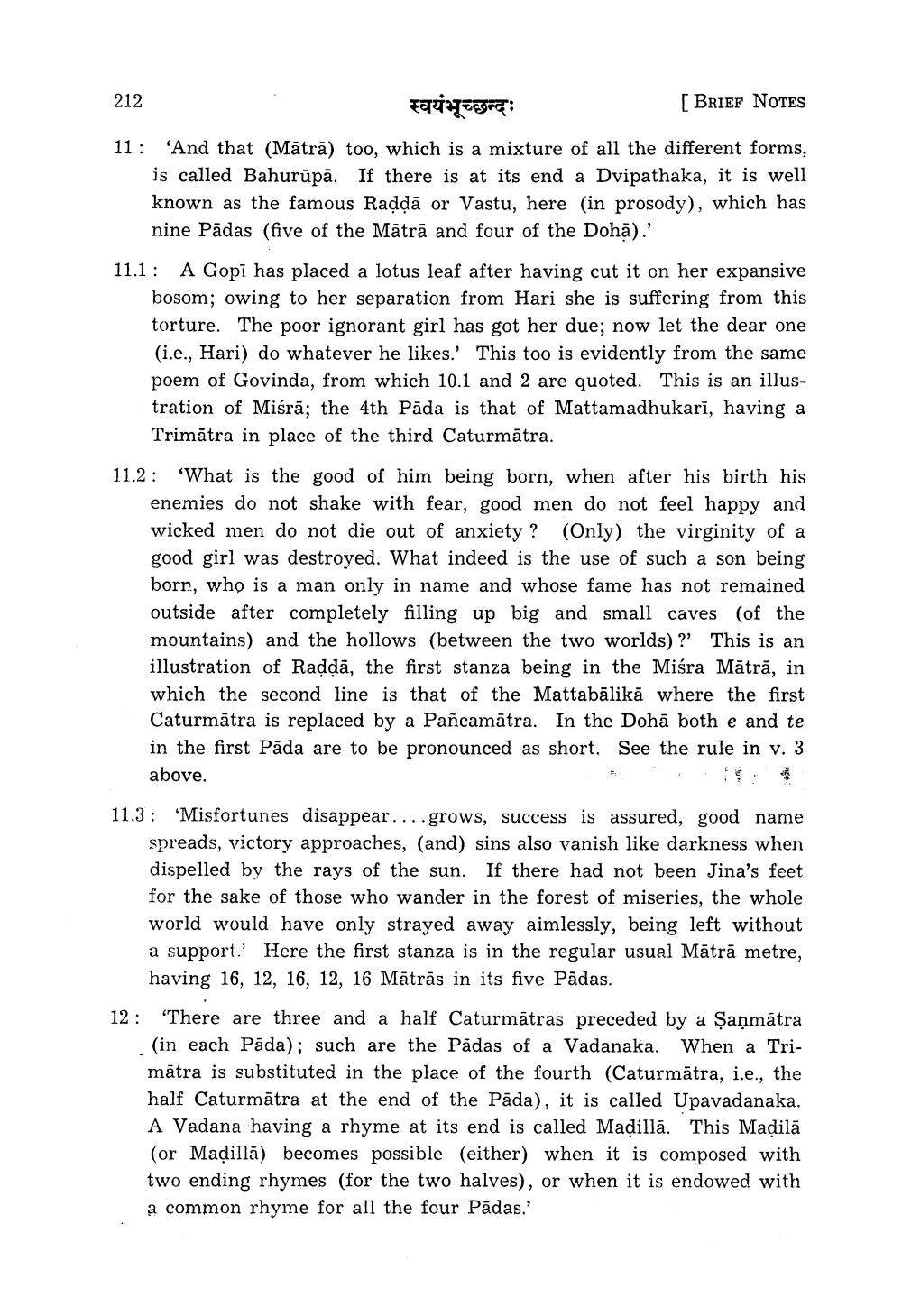________________
212
स्वयंभूच्छन्दः
[BRIEF NOTES
11: 'And that (Mātrā) too, which is a mixture of all the different forms,
is called Bahurūpā. If there is at its end a Dvipathaka, it is well known as the famous Raddā or Vastu, here (in prosody), which has nine Pādas (five of the Mātrā and four of the Dohā).'
11.1: A Gopi has placed a lotus leaf after having cut it on her expansive
bosom; owing to her separation from Hari she is suffering from this torture. The poor ignorant girl has got her due; now let the dear one (i.e., Hari) do whatever he likes.' This too is evidently from the same poem of Govinda, from which 10.1 and 2 are quoted. This is an illustration of Miśrā; the 4th Pāda is that of Mattamadhukarī, having a Trimātra in place of the third Caturmätra.
11.2: "What is the good of him being born, when after his birth his
enemies do not shake with fear, good men do not feel happy and wicked men do not die out of anxiety? (Only) the virginity of a good girl was destroyed. What indeed is the use of such a son being born, who is a man only in name and whose fame has not remained outside after completely filling up big and small caves (of the mountains) and the hollows (between the two worlds)?' This is an illustration of Raddā, the first stanza being in the Misra Mātrā, in which the second line is that of the Mattabālikā where the first Caturmātra is replaced by a Pañcamātra. In the Dohā both e and te in the first Pāda are to be pronounced as short. See the rule in v. 3 above.
11.3: "Misfortunes disappear. ... grows, success is assured, good name
spreads, victory approaches, (and) sins also vanish like darkness when dispelled by the rays of the sun. If there had not been Jina's feet for the sake of those who wander in the forest of miseries, the whole world would have only strayed away aimlessly, being left without a support. Here the first stanza is in the regular usual Mātrā metre, having 16, 12, 16, 12, 16 Mātrās in its five Pādas.
12: "There are three and a half Caturmātras preceded by a Şaņmātra
(in each Päda); such are the Pädas of a Vadanaka. When a Trimātra is substituted in the place of the fourth (Caturmätra, i.e., the half Caturmātra at the end of the Pāda), it is called Upavadanaka. A Vadana having a rhyme at its end is called Madillā. This Madilā (or Maļillā) becomes possible (either) when it is composed with two ending rhymes (for the two halves), or when it is endowed with a common rhyme for all the four Pādas.'




